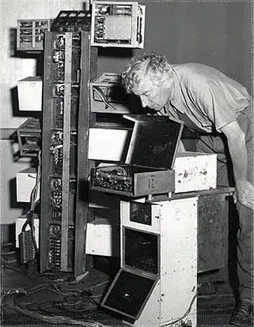1927 Bartol Research Foundation

In 1927, the Bartol Research Foundation announced its move from its temporary site in Philadelphia to its own building on Swarthmore's campus. At the time, President Frank Aydelotte heralded the move as the year's "most important event in the intellectual life of the College."
For the next 50 years, Bartol scientists employed Swarthmore students in various capacities, taught classes at the college, and collaborated with faculty members. The foundation also produced a host of scientists who made major contributions to their fields, a feat made even more impressive given its small size.
Known for its pioneering studies of cosmic rays and work in nuclear physics, Bartol hosted an international contingent of scientists and researchers. During World War II, Bartol's principal work involved the development of magnetron cathodes. William Elmore, a member of Swarthmore's physics department, conducted research at Bartol at that time. After the war, basic research in solid state and surface physics continued, along with the resumption of cosmic ray investigations led by Bartol director W.F.G. Swann.
Bartol's scope further expanded in the 1960's under its second director, Martin Pomerantz, who pioneered research programs in astronomy and astrophysics in Antarctica. In the 1960s and 1970s, several Swarthmore graduates were recruited to Bartol's South Pole station to maintain the equipment used in their cosmic ray physics research.
Yet Bartol never became an integral part of the College and, even among the College's science faculty, was known well by only a few. When Bartol's lease came up for review in the 1970s, the College ended its relationship with the foundation and took possession of its building. The inability of both institutions to develop closer collaborations is now viewed by many on both sides as a lost opportunity.
Renamed the Bartol Research Institute, it moved to its present location at the University of Delaware in 1977. The building it once occupied on campus was renamed Papazian Hall and for 40 years housed the College's philosophy and psychology departments. It was demolished in 2017 and is now the site of Maxine Frank Singer Hall.



